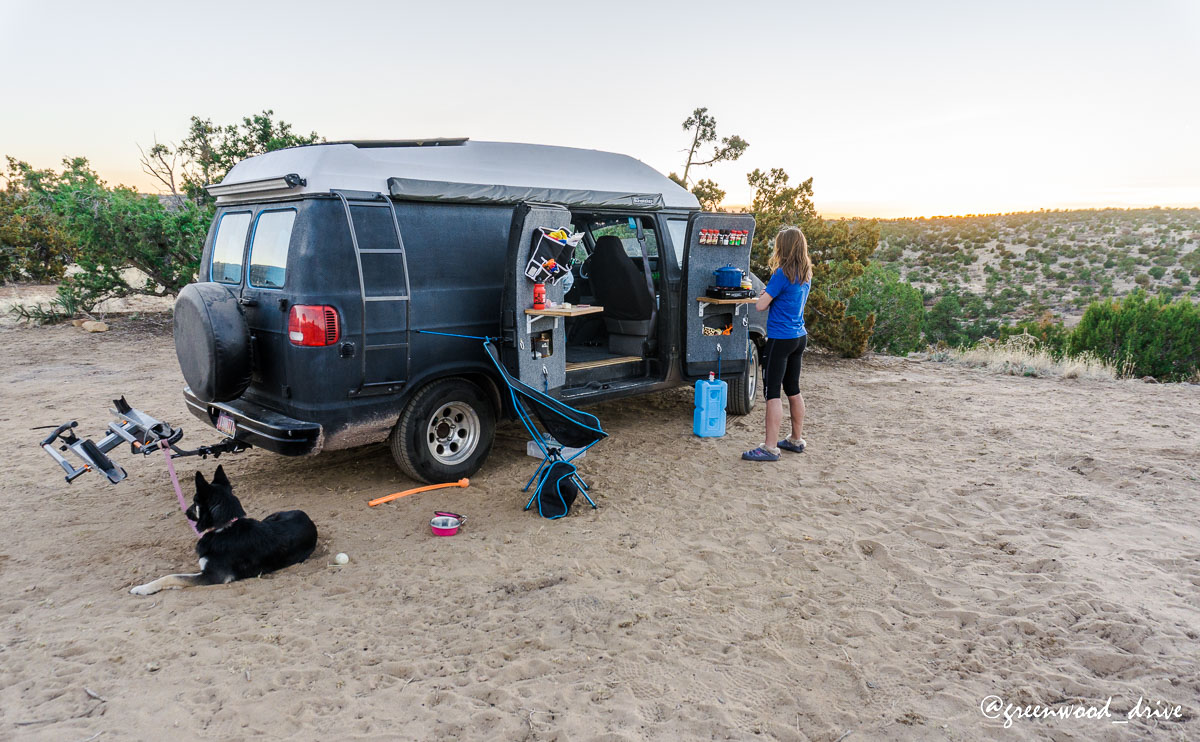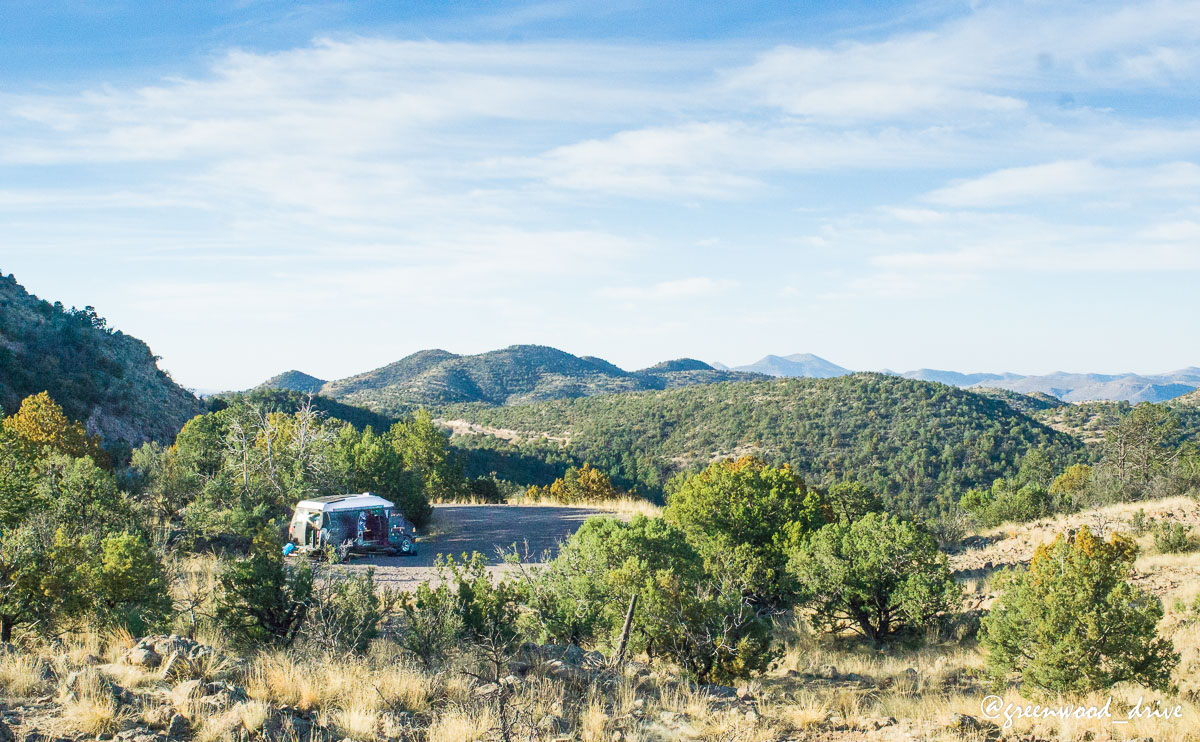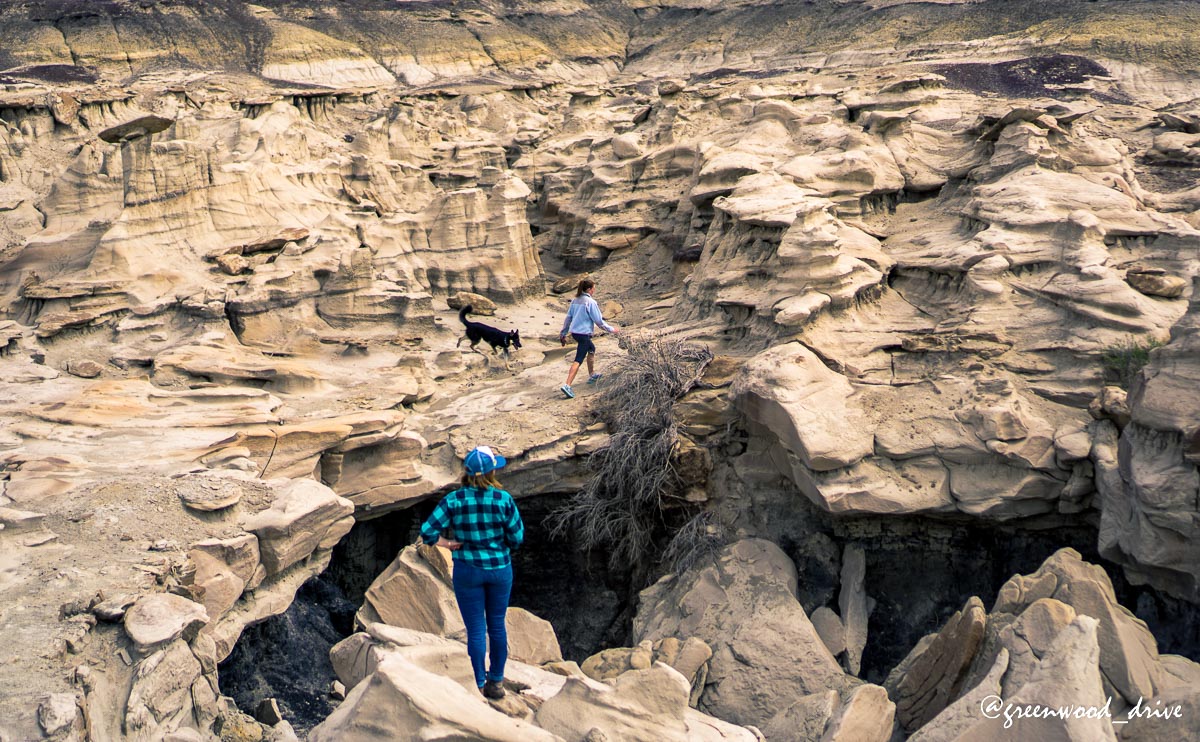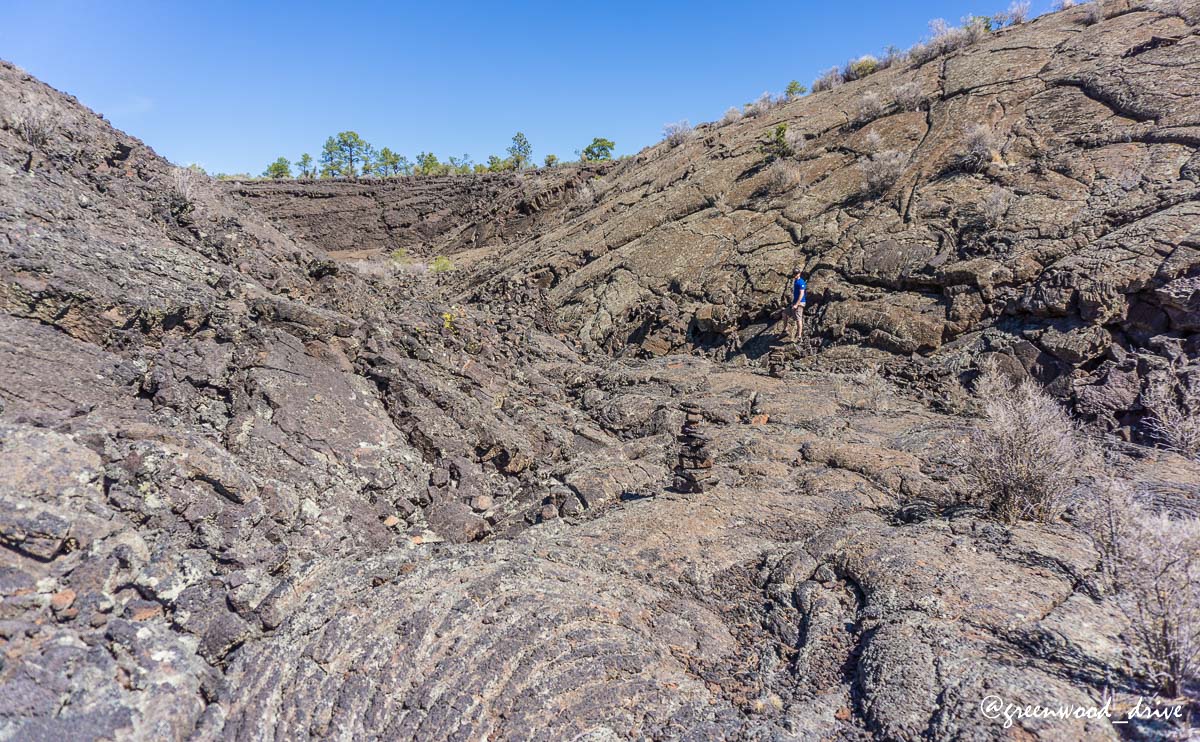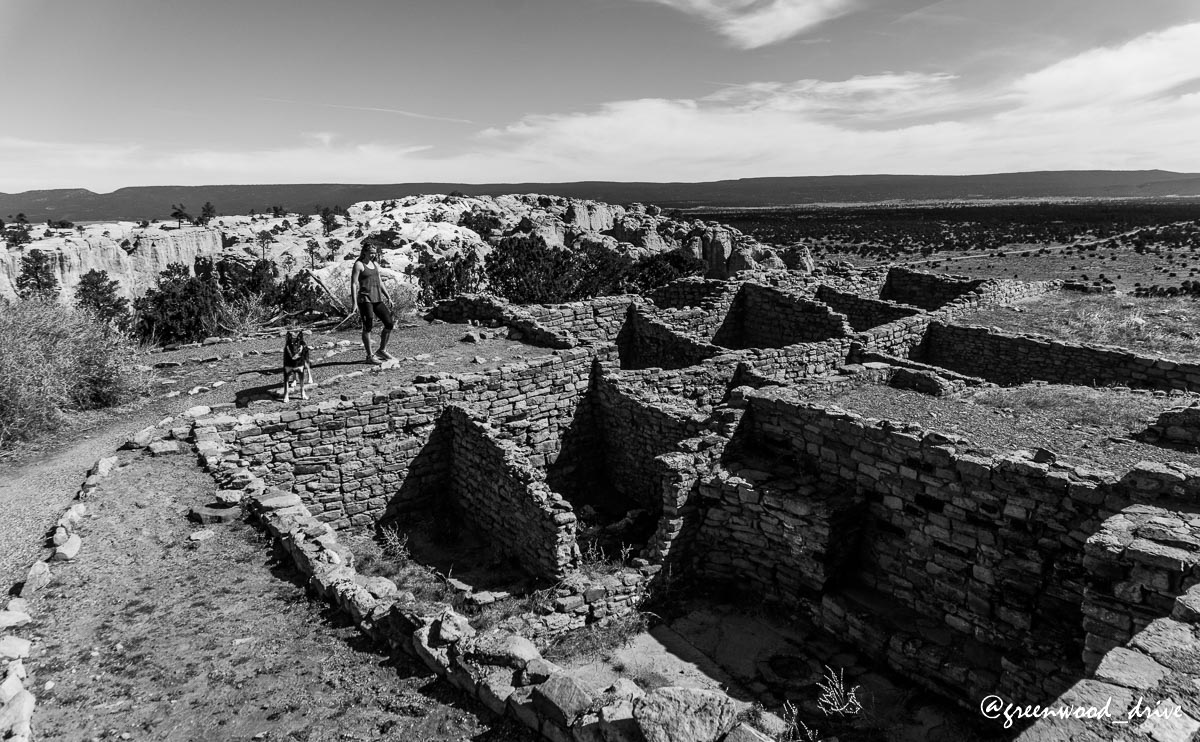
Albuquerque, Petroglyphs, Watering Holes, and Volcanoes.
Headed south from Lake Cochiti we veered into Tent Rocks National Monument, then proceeded to immediately veer back because not only was there a line to get in (at 9am on a Tuesday!) but they didn’t allow dogs to even enter the park. All the better, because we were able to meet up with our friend Kelly and his girlfriend, Erica.
Catching up over some beers was nice, and Erica made us an amazing taco dinner that we now have a goal to replicate some day. The next morning she took us to Loyola’s Family Restaurant for some green chili breakfast buritos. This is one of the diners in the Breaking Bad/Better Call Saul series although, again, we didn’t think to take a picture. Kate and I took Harper on a walk down the Rio Grande after visiting old town Albuquerque, which clearly was a miserable experience for her:

Pinterest, in all of its invaluable wisdom, told Kate that there was a giant highway rock snake in the area. I’m sure it is meant to add some interest to a droning drive, but for us it turned into a destination. Worth it? I can’t really say…
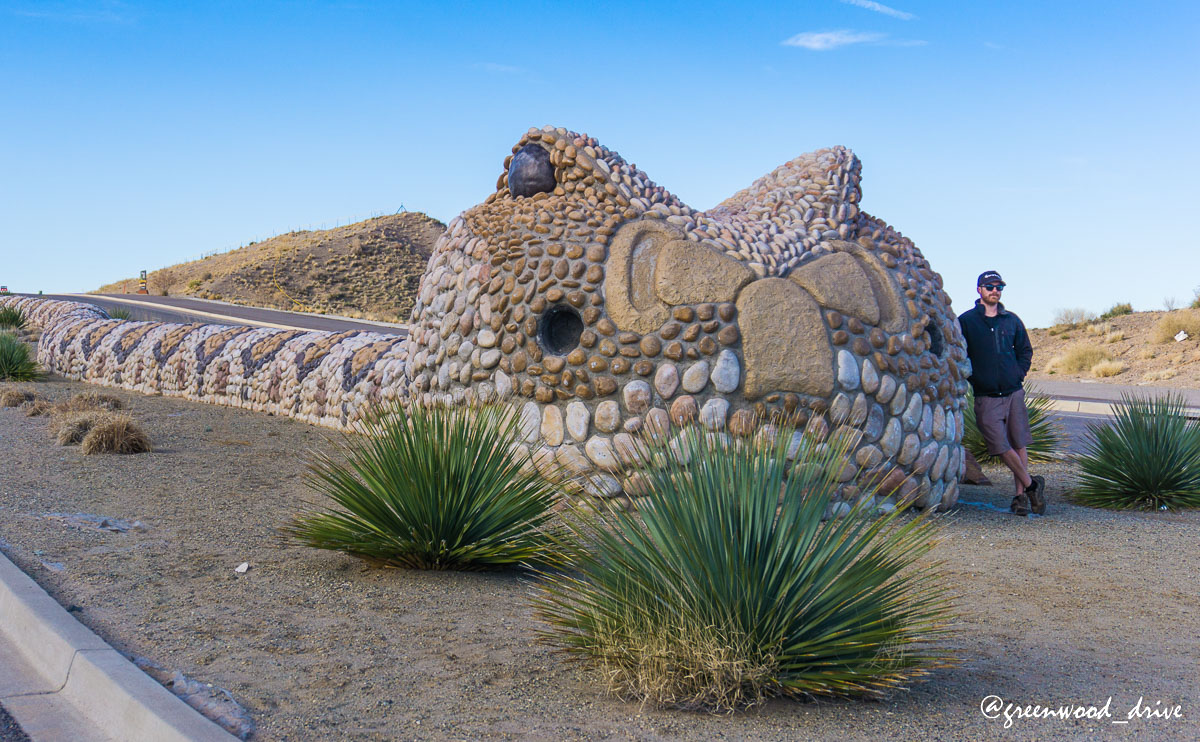
On the west end of the city, embedded in neighborhoods, is Petroglyph National Park. Some things we learned about the park while we were there: “Petro” means rock and “glyph” means carving, which is different than petrograph which is a painting. Most of the symbols in the park have lost their meaning as the cultures have disappeared, but they were likely communication to natives traveling through the area. The rocks in the park are very dark on the outside due to oxidation of the exposed surface, also called “desert varnish”. Due to this phenomenon, experts can help date different carvings by how dark they are. The brighter carvings are more recent.
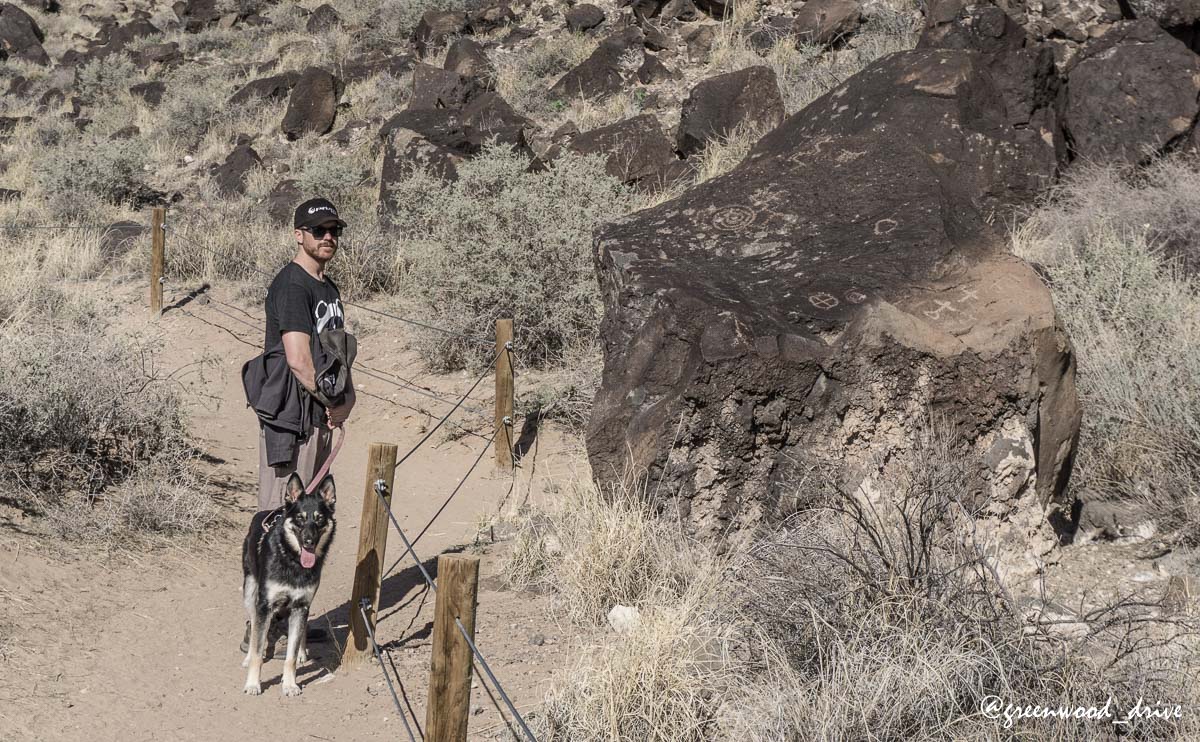
Some of the carvings look like familiar objects and some are downright strange.
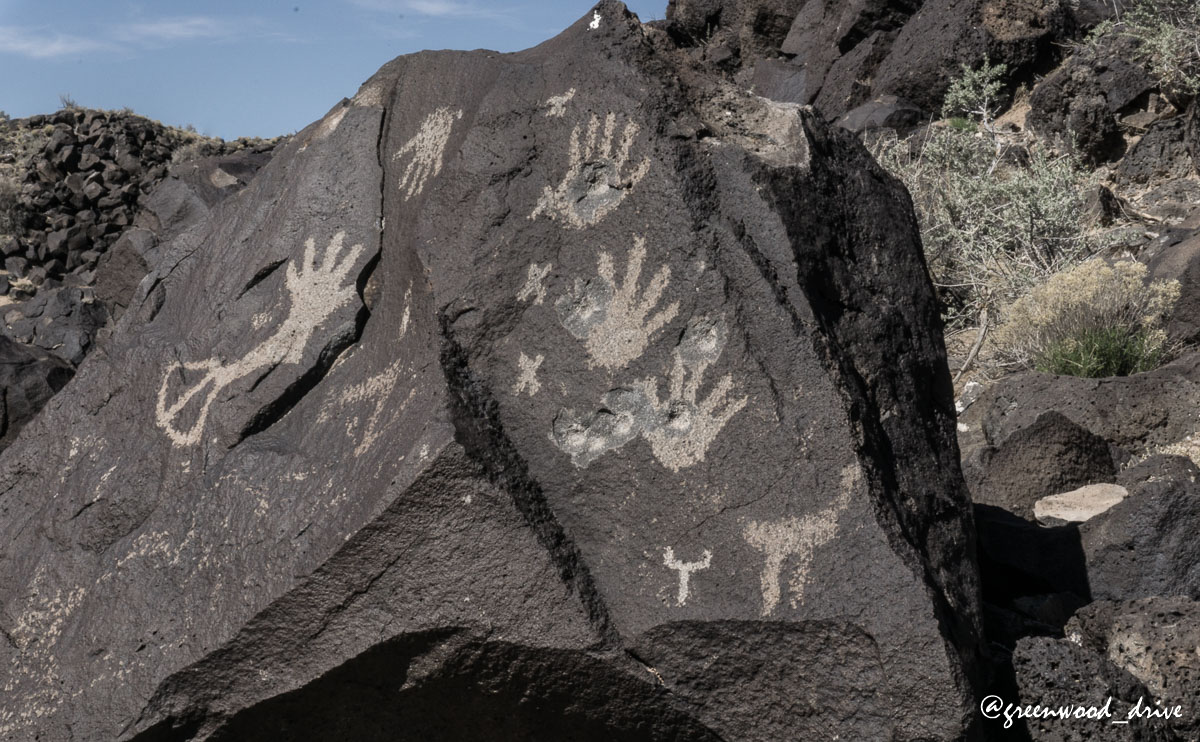
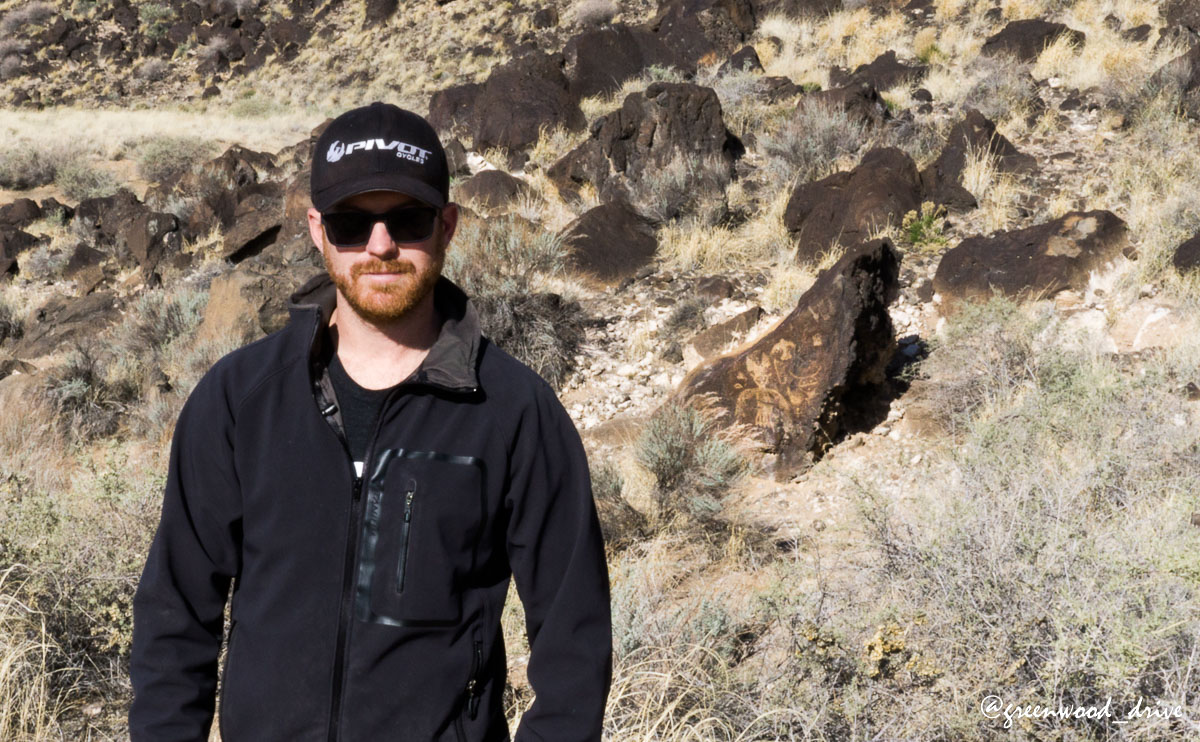
The National Park Service have a little passport system at their visitor centers that provides a dated stamp specific to the point of interest when explorers visit. Along the way we have begun to fill our book with these little guys which is pretty fun. Collecting them is as rewarding as upvotes and Pokemon and probably nearly as valuable.
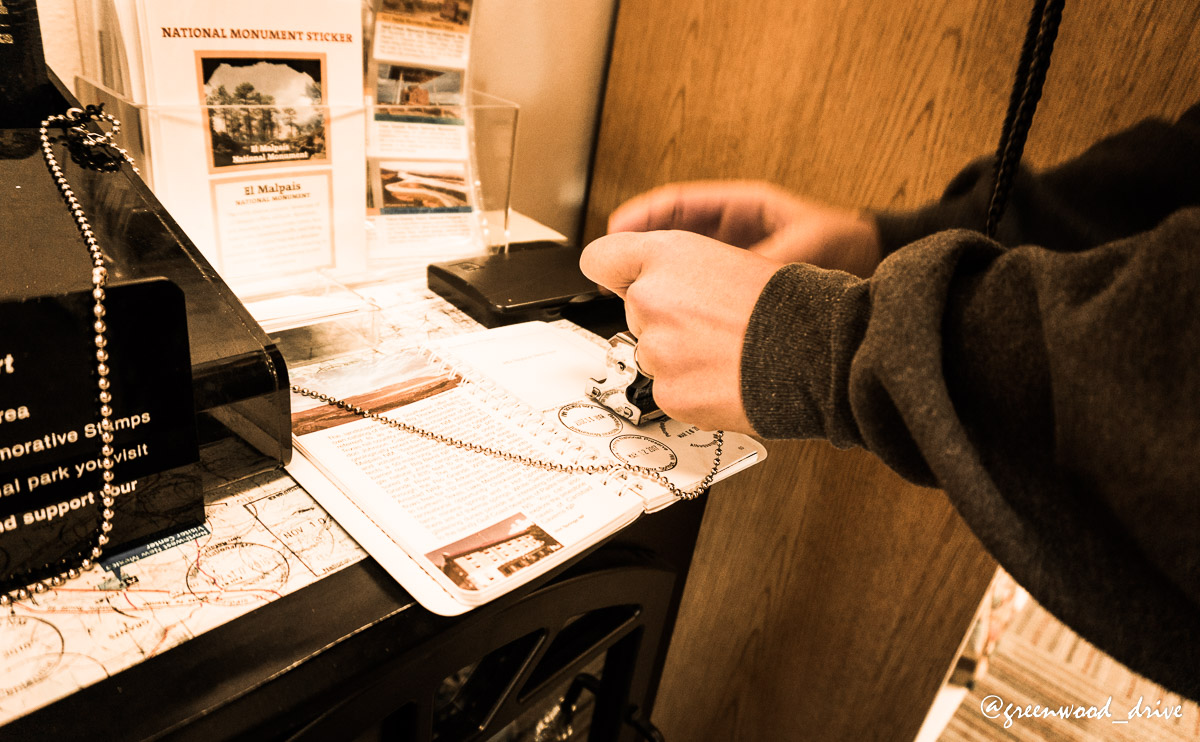
A couple of hours west of Albuquerque is a small, isolated monument called El Morro. The destination fit the remoteness as it is a little rain fed watering hole that Ancesteral Puebloans and, more recently, Spanish and American travelers would visit when crossing the desert. The variety of travelers beget a variety of carvings near the hole which started off our hike:
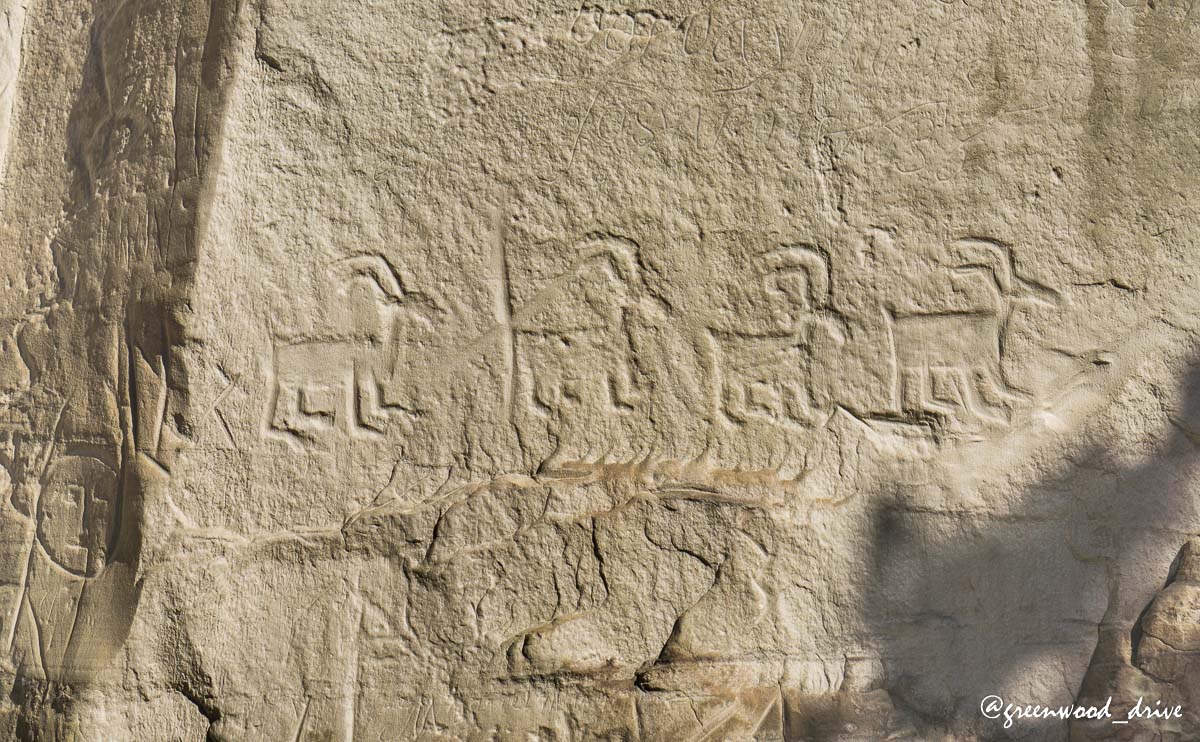
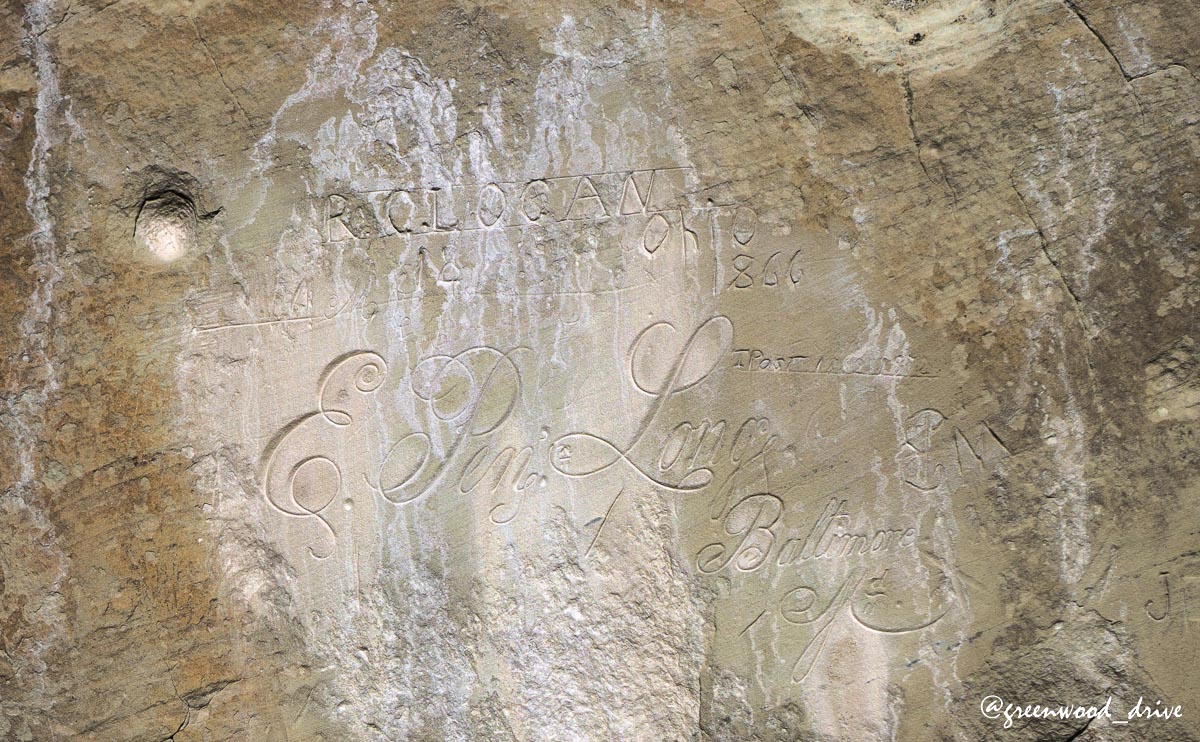
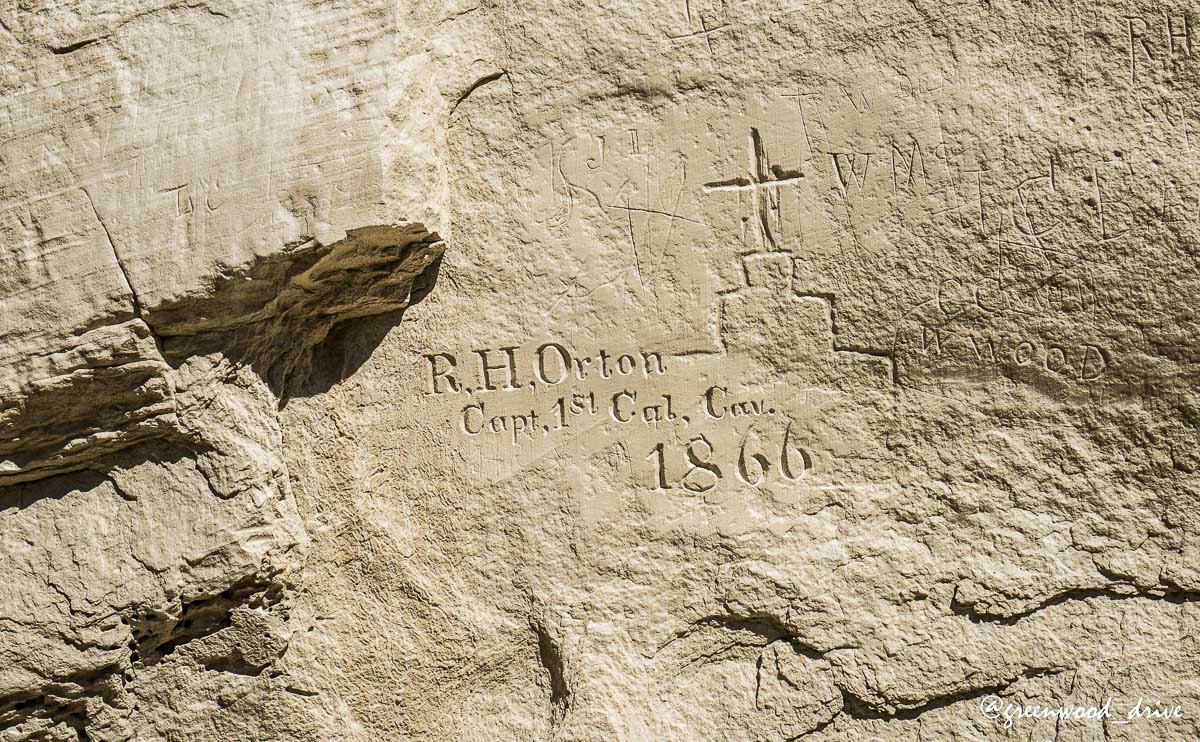
This was cool in and of itself, but the style of the trail that led around the top of the headland was something neither Kate or I had experienced before. The rock formations leading up were quite large.
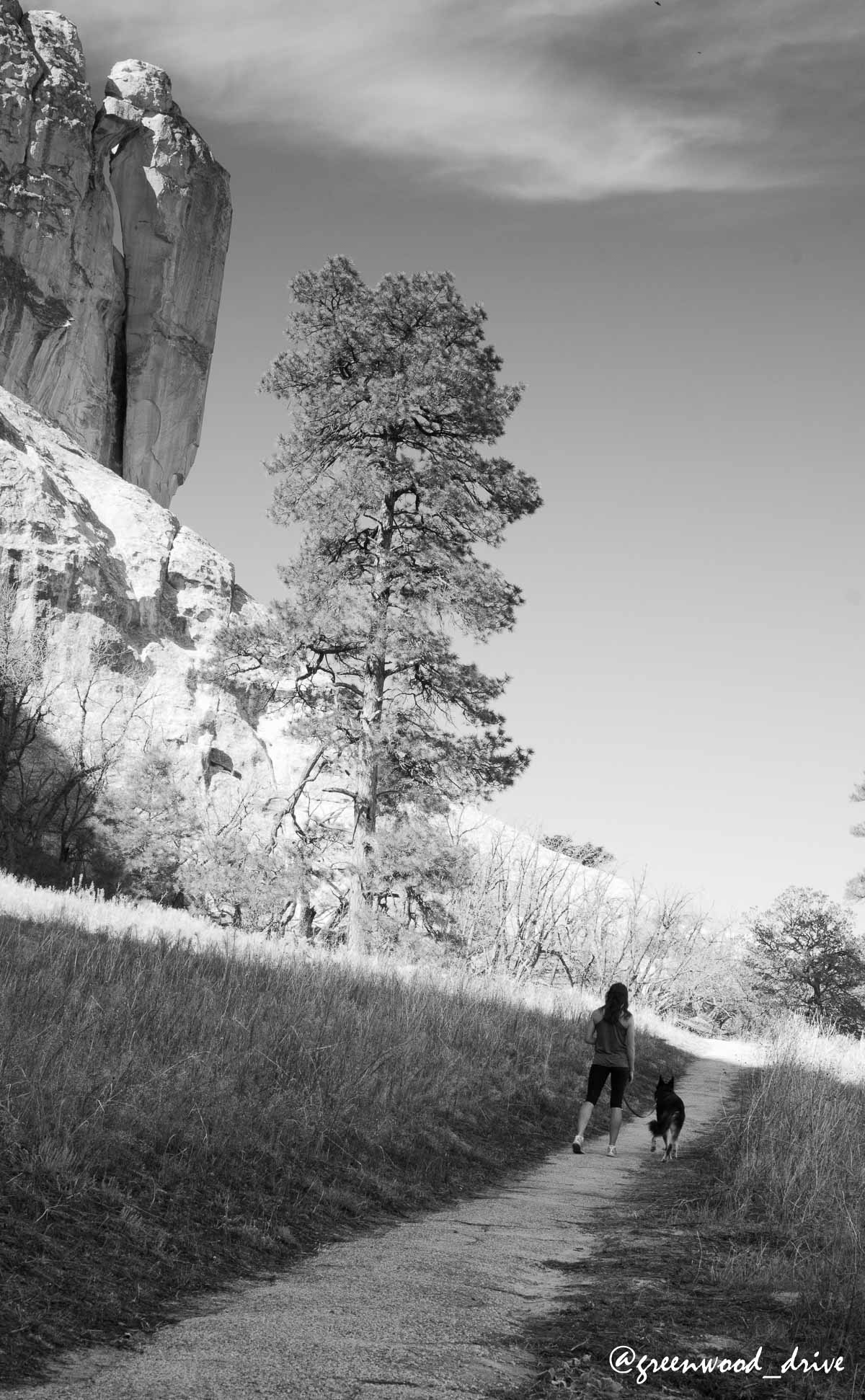
After a few short switchbacks we were walking around on sandstone with some amazing color gradients in them.
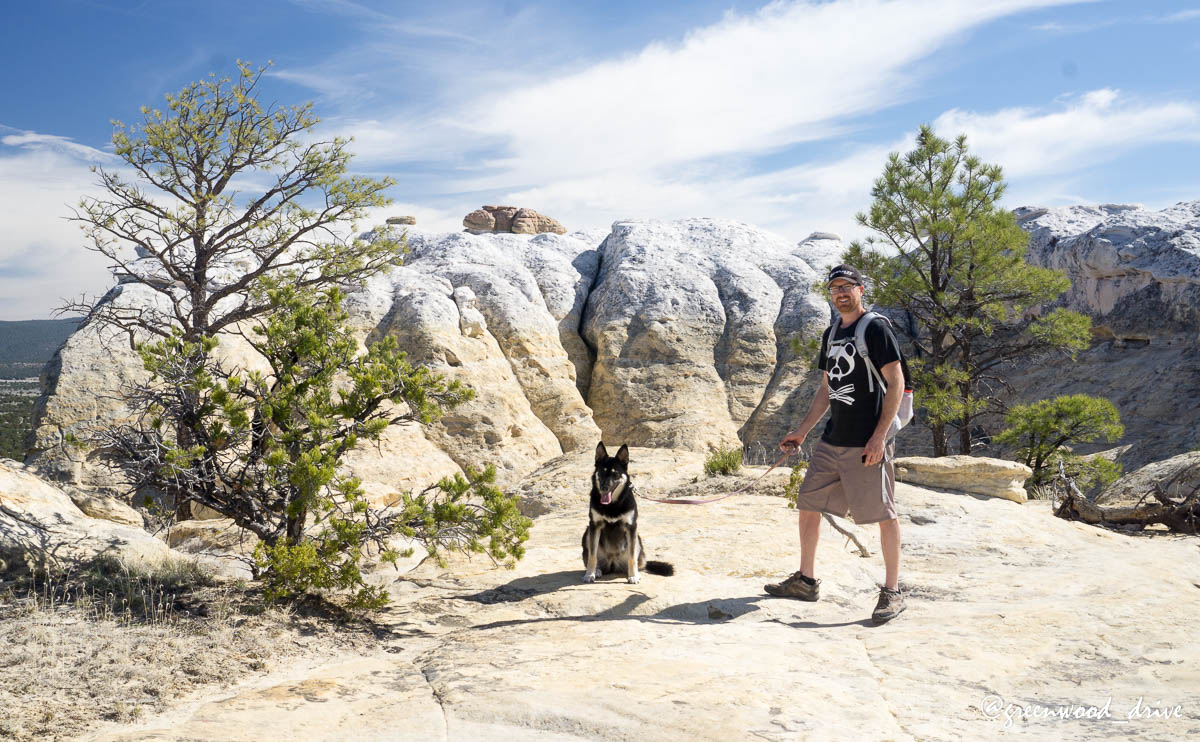
A bit of water pooled at the top hinted at the larger hole below.
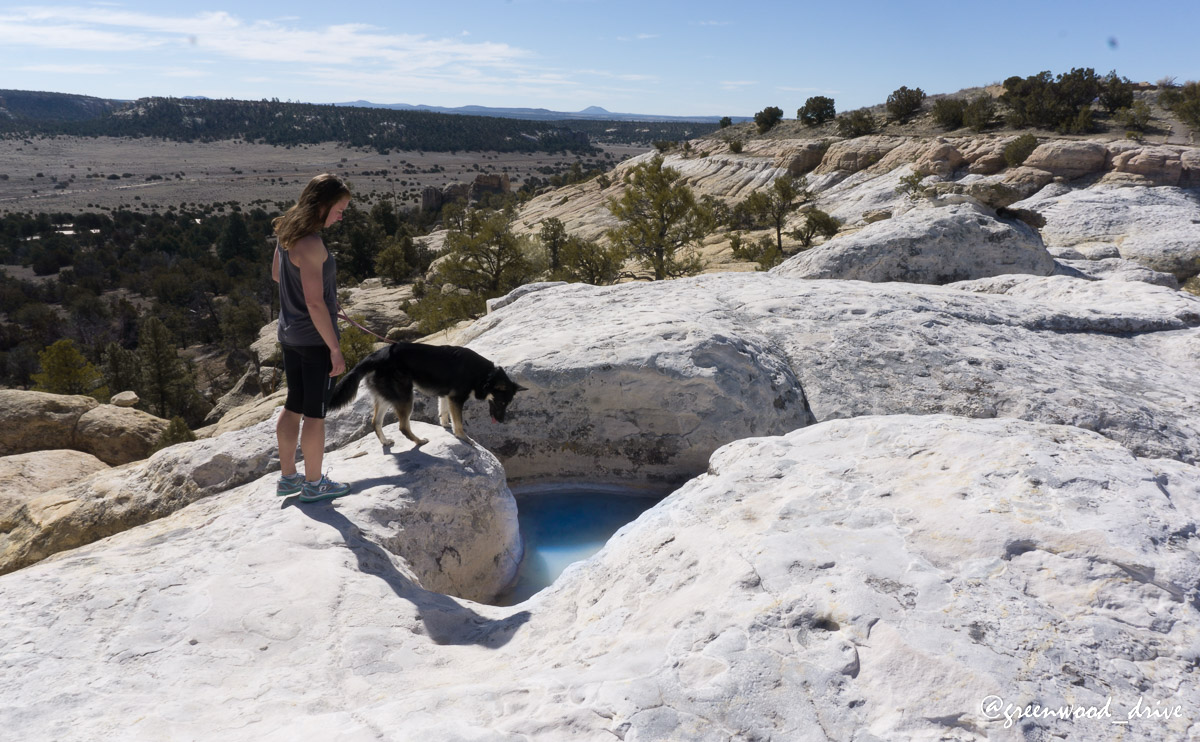
The unique part was the cool steps that were carved by the National Park Service into the sandstone. While the hike was short it took us awhile with our consistent stopping to admire the trail.
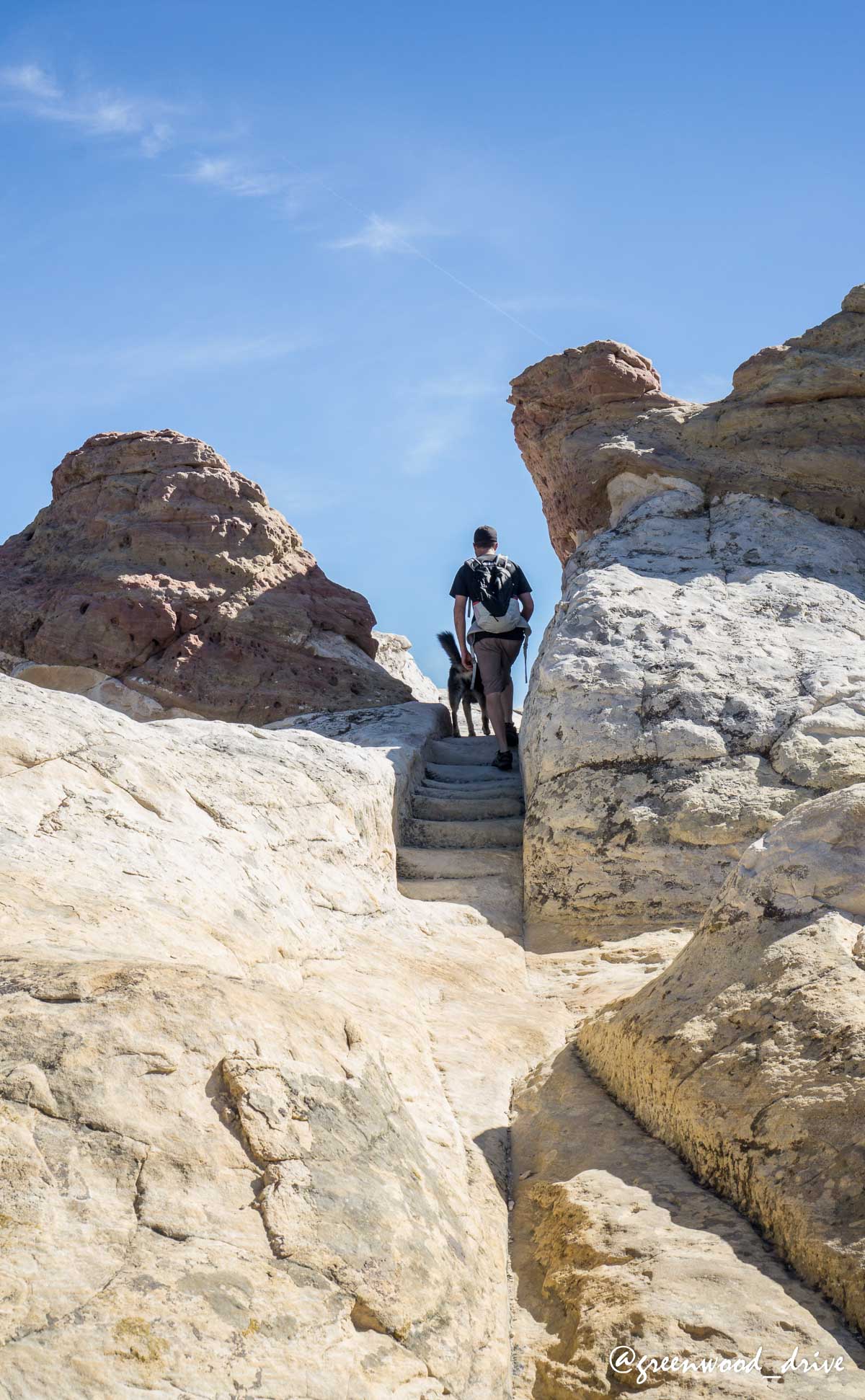
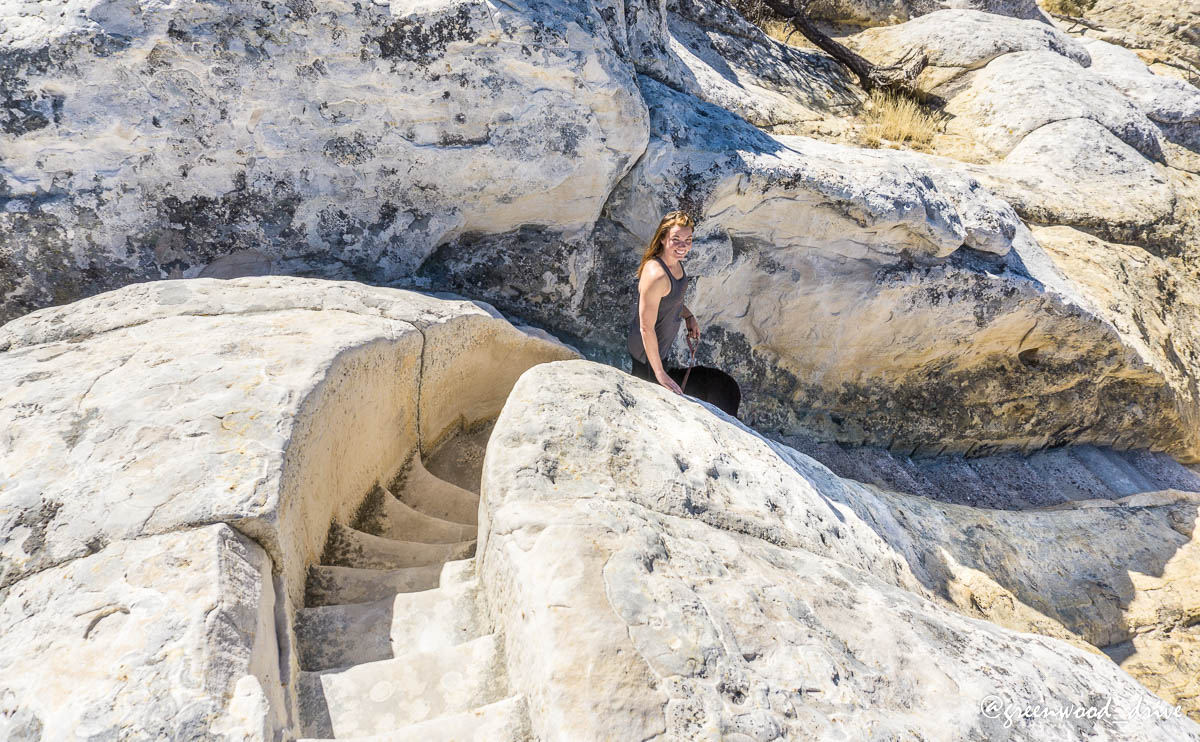
The trail peaked at partially excavated ruins at the top of the monument, overlooking the pool and surrounding area:

Our mental plates were chock full after all of this but we had one more stop planned before hunkering down for the night. On the way to the campsite we visited the Bandera Volcano and Ice Cave- the land of fire and ice. The porous lava rock is so insulating that in really deep caves it doesn’t get above freezing, so ice slowly accumulates at the bottom. This site used to be mined for the ice, but since it has been turned into a preserve it has grown to be 20+ feet thick:
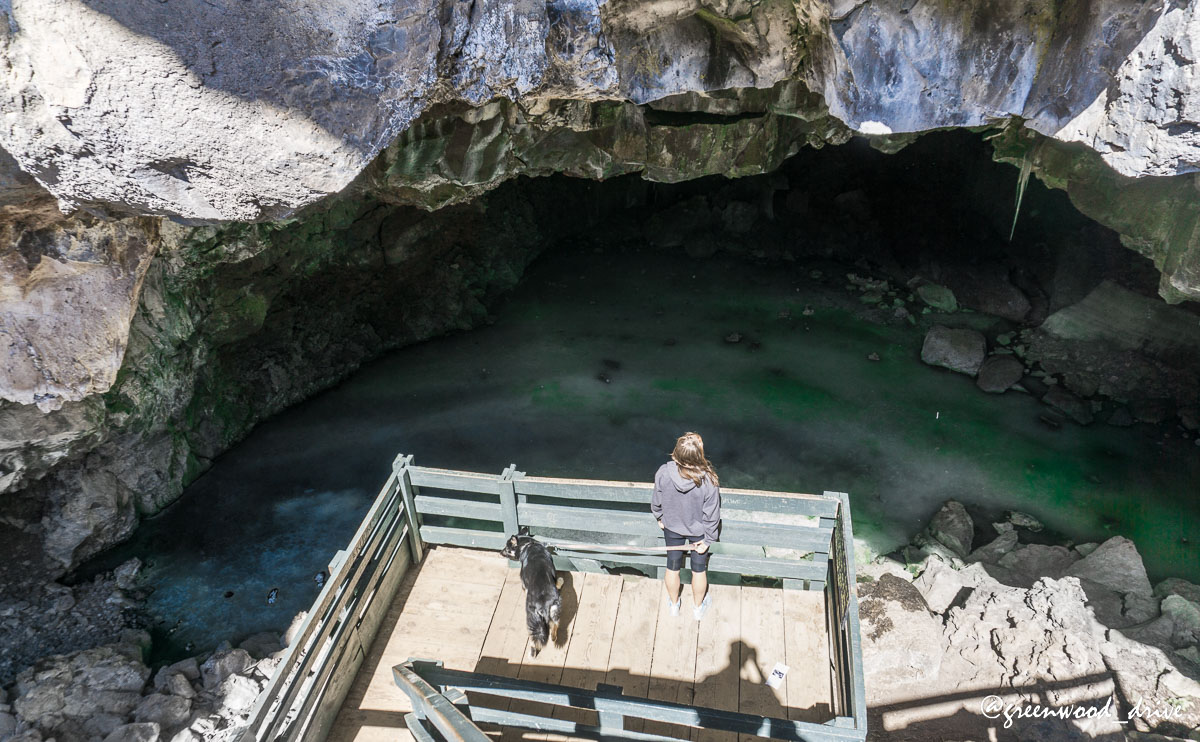
The lava rocks surrounding created a very rugged atmosphere to our hike.
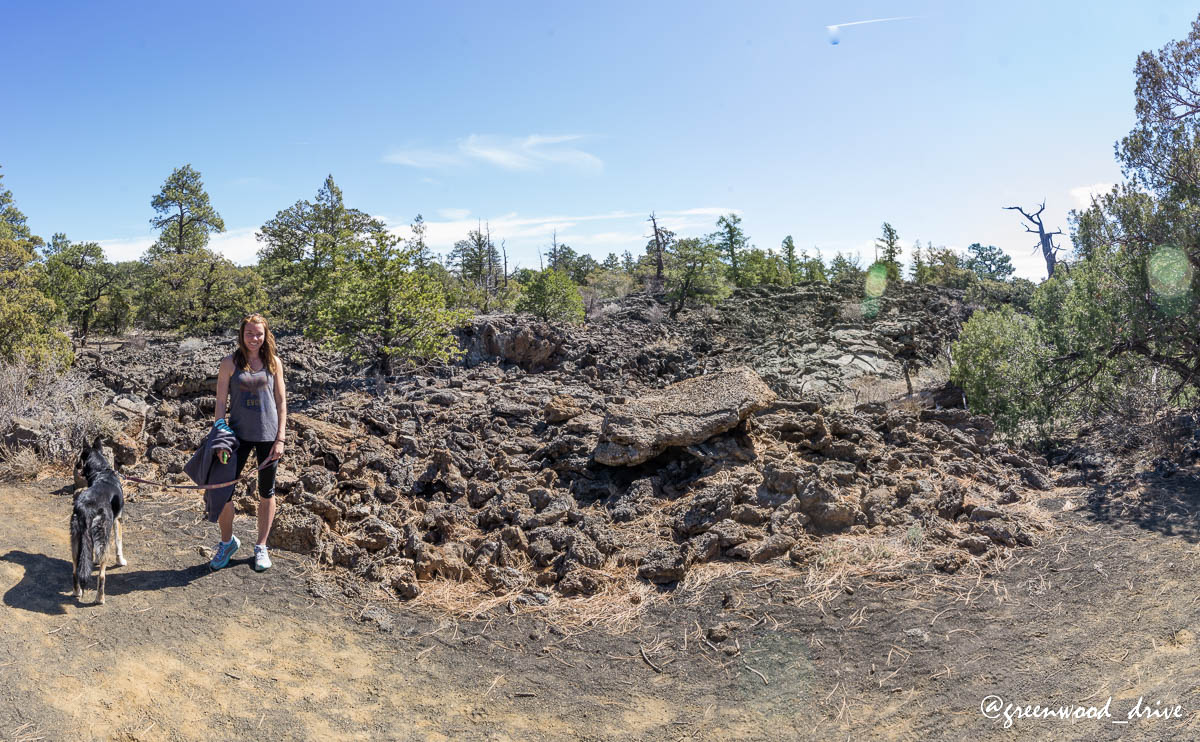
Next to the ice cave, perhaps a 30 minute walk, was the volcano itself. Operated privately, we had to pay to go up the trail but it was populated with signs that described the surrounding volcanoes and rock formations.
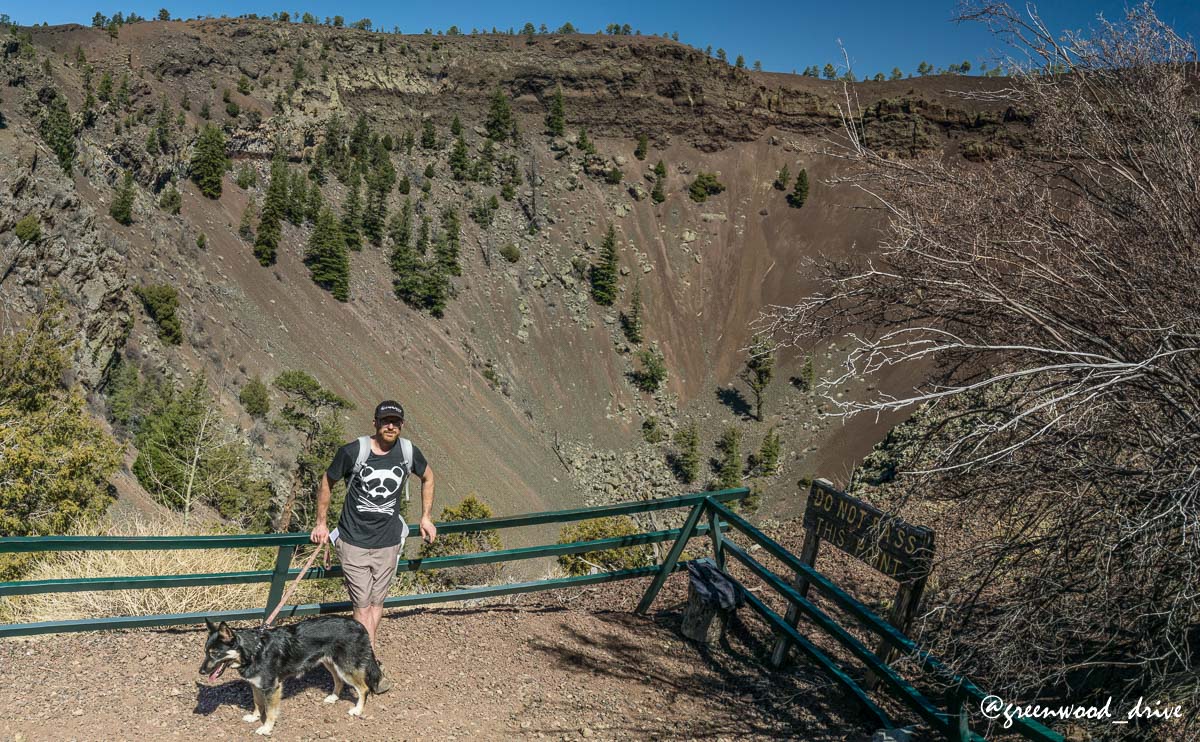
We ended the day camping on the outskirts of El Malpais National Monument, just in time for dinner and a sunset.
